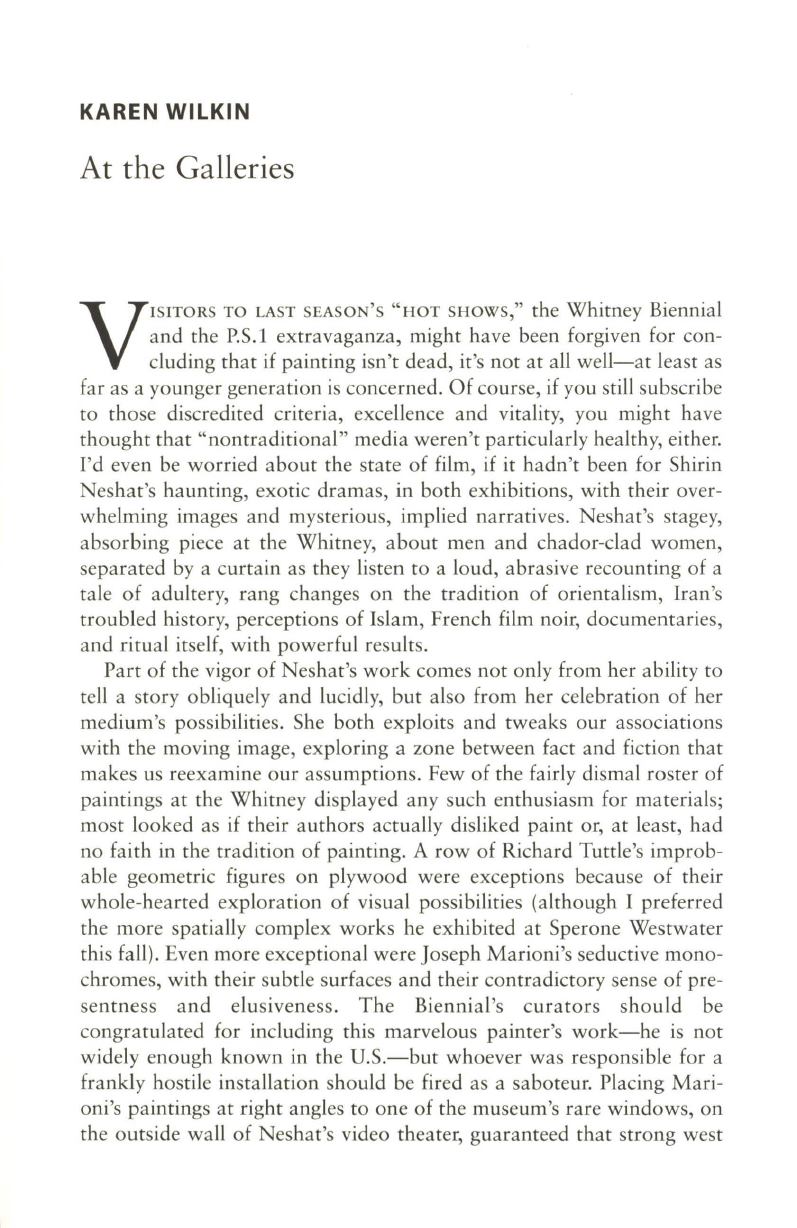
KAREN WILKIN
At the Galleries
V
ISITORS TO LAST SEASON'S "HOT SHOWS,"
the Whitney Biennial
and the P.S.l extravaganza, might have been forgiven for con–
cluding that if painting isn't dead, it's not at all well-at least as
far as a younger generation is concerned. Of course, if you still subscribe
to those discredited criteria, excellence and vitality, you might have
thought that "nontraditional" media weren't particularly healthy, either.
I'd even be worried about the state of film, if it hadn't been for Shirin
Neshat's haunting, exotic dramas, in both exhibitions, with their over–
whelming images and mysterious, implied narratives. Neshat's stagey,
absorbing piece at the Whitney, about men and chador-clad women,
separated by a curtain as they listen to a loud, abrasive recounting of a
tale of adultery, rang changes on the tradition of orientalism, Iran's
troubled history, perceptions of Islam, French film noir, documentaries,
and ritual itself, with powerful results.
Part of the vigor of Neshat's work comes not only from her ability to
tell a story obliquely and lucidly, but also from her celebration of her
medium's possibilities. She both exploits and tweaks our associations
with the moving image, exploring a zone between fact and fiction that
makes us reexamine our assumptions. Few of the fairly dismal roster of
paintings at the Whitney displayed any such enthusiasm for materials;
most looked as if their authors actually disliked paint or, at least, had
no faith in the tradition of painting. A row of Richard Tuttle's improb–
able geometric figures on plywood were exceptions because of their
whole-hearted exploration of visual possibilities (although I preferred
the more spatially complex works he exhibited at Sperone Westwater
this fall). Even more exceptional were Joseph Marioni's seductive mono–
chromes, with their subtle surfaces and their contradictory sense of pre–
sentness and elusiveness . The Biennial's curators should be
congratulated for including this marvelous painter's work-he is not
widely enough known in the U.S.-but whoever was responsible for a
frankly hostile installation should be fired as a saboteur. Placing Mari–
oni's paintings at right angles to one of the museum's rare windows, on
the outside wall of Neshat's video theater, guaranteed that strong west


